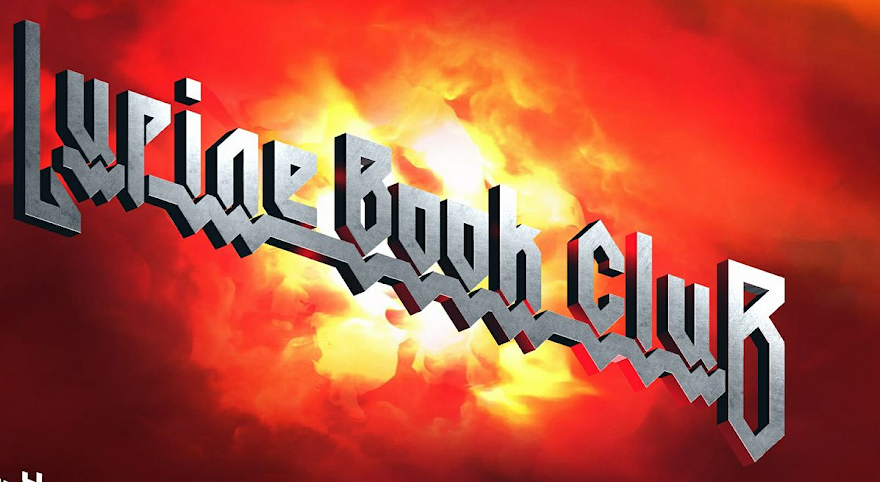Year: 2009
RRP: See “Availability”
BACKGROUND
I had a little bit of Playmobil as a kid, but my primary experience of it was actually in my Sunday School, around the ages of 5-7. They had what seemed like a HUGE amount of Playmobil characters – apparently known as “Klickies” stashed in the room for kids to play with. They didn’t embed themselves on my youthful consciousness in the same way as say, Lego or TMNT, but I retain a certain fondness for them nonetheless.
At any rate, I found myself visiting a small toyshop on the
Central Coast this weekend and they were clearing out Playmobil at 40% off.
Recently I’d seen a Wizard figure that I liked the look of, but he wasn’t to be
found – but then I saw this Scareglow-looking character and I was instantly
intrigued. Intrigue levels rose even further when I realised that he was actually a glow in the dark figure. I’d never seen
a GITD Playmobil figure before, so far as I could remember. And should I decide to
purchase the Wizard in future, he would make a nice counterpart…
After a quick internal wrestle, I pulled the trigger on the
purchase. For $2.40, I couldn’t go wrong.
SCULPT AND
ARTICULATION
 Playmobil Klickies are built on one base figure (like a Lego
minifigure), standing just under 3 inches tall. There seem to be a couple of
variations (e.g. to allow for child Klickies), but most of the differentiation
between figures appears to come from the accessories and paintwork. So this guy
is more or less the same figure that I played with 20+ years ago, at his core.
If you’ve ever owned a Playmobil toy, you know what you’re in for.
Playmobil Klickies are built on one base figure (like a Lego
minifigure), standing just under 3 inches tall. There seem to be a couple of
variations (e.g. to allow for child Klickies), but most of the differentiation
between figures appears to come from the accessories and paintwork. So this guy
is more or less the same figure that I played with 20+ years ago, at his core.
If you’ve ever owned a Playmobil toy, you know what you’re in for. The face is cast in GITD plastic, the body in black, the arms in grey, the hands in white and his boots in black. Articulation is minimal – cut neck, cut shoulders and cut wrists. Due to the belt, the arms aren't able to hang quite flush the body. The hips are on a hinge, so the legs all move as one piece. Though minimal by modern standards, it fits the simplistic aesthetic of the toy nicely.
ACCESSORIES
The Ghost Knight comes with quite a few accessories – most
of which I suspect have previously seen release in other lines, but I am no
expert on Playmobil, past or modern. Those with more knowledge than me should
feel free to comment below.
He comes with:
*a chainmail “hairpiece”
*a black hood piece
*a black cape
*black gauntlets
*a red belt, with loop for the his sword.
*a silver sword
*a silver greataxe with a silver skull attached to its top
The skull is removable, so the axe doesn’t have to include
it if you would prefer it without. All accessories are unpainted. PAINT
The “paint” on Playmobil figures seems to be largely the work of
tampographs. Being a ghost knight, his body is presumably incorporeal, and the
black chest and legs have been decorated with GITD paint too. A red strap is
slung along his chest, matching the belt piece. Tattered dark grey remnants of
his robe are around his neck and waist.
Strangely, his arms are not decorated with bones – as they're cast in grey, I can only assume that his sleeves have lasted longer than the torso covering of his shirt. Switch the light off and the bones glow nicely. I am a total sucker for GITD, so the purchase price is justified right there for me.
The only real issue was that some of the GITD paint seems to
have scraped off the right leg. It was like this when I opened it, and doesn’t
appear to have flaked any further as yet. I suspect the tampo may not have been
properly applied, or it may have scraped off during shipping. As he’s in a
sealed box, you won’t be able to check prior to opening.
AVAILABILITY
This guy doesn’t seem to be too hard to track down on Amazon
or eBay. It seems you’ll probably pay about $10 for him (plus postage) which
isn’t outrageous, though certainly above retail. In store? I’d never seen him
before, but I wasn’t buying toys in 2009. Still, I don’t like your chances.
OVERALL
It’s probably been close to 20 years since I have played
with Playmobil, but it was a really cool experience going back to it. I
remember very little about the themes that were available when I was young, but
these days it seems Playmobil are cultivating their adult audience by producing
a variety of figures and themes that seem to be a little more adult-oriented –
age 4-10 label notwithstanding – with this guy being a bit of a case in point.
It’s pretty cool move, though judging by the relatively small quantity of
Playmobil that seems to be on shelves, I don’t know how successful this has
been.
But overall, the Ghost Knight is an excellent little figure,
and I’m very glad to have come across him, especially at such a low price.
As for this guy’s alignment – well, I naturally assumed he
was a villain, some kind of evil wizard. But his designation as a “Ghost
Knight” leaves it more ambiguous. You’re free to make up your own mind on this
one, though I think he’ll primarily be a bad guy for me. 








